“The Incredulity of Saint Thomas and the Bishop Saint Magnus”, Cima da Conegliano, 1504-1505, Gallerie dell’ Accademia, Venice.

When Cima da Conegliano received this commission from a guild of tradesmen, he was at the height of his career. In fact, many of his commissions had come from such guilds or scuole. This guild was based in Venice and was known as the Scuola dei Mureiri. Mureiri is Venetian dialect for builders or more specifically “wallers”. The term derives from the Italian word for a wall. This all sounds rather down market, but the members of this scuola must have been quite sophisticated, given their taste in art and architecture, at least if this painting is anything to go by. The painting is one of the most striking in the gallery’s collection and it is full of exquisitely rendered detail. The Risen Christ stands at the centre of the composition but the painting is really about the two saints. St Thomas is on the left, and St Magnus, the 7th century Bishop of nearby Oderzo, is on the right. The Risen Christ showing his wound functions as an identifier for St Thomas. St Thomas was chosen because he is the patron saint of builders. His association with building derives from the account of his missionary activity in India given in the Golden Legend and elsewhere. Sometimes he is shown holding a right-angled architectural instrument, but most often his identity is established by his finger touching the wound in Christ’s side. This Bishop Saint Magnus was also associated with building and was the patron saint of the scuola.
The Venetian Church of Santa Maria Formosa was said to be the first of the city’s churches dedicated to the Virgin Mary. The story was that in the 7th Century, Bishop Magnus had a vision of a very beautiful Virgin Mary (hence “formosa” meaning most beautiful ), who told him to build her a church in a location, which would be shown by a white cloud. And so he did. The Church of Santa Maria Formosa had been rebuilt in 1492 by the eminent architect, Mauro Codussi, and the architectural frame under which the three figures stand echoes his style of architecture. The strong light that cuts through from the left emphasises the this solid three dimensional architectural frame, as do the shadows cast by the three figures.
St Magnus and St Thomas were obvious choices for the altarpiece. What is unusual here is that Cima takes an element from the gospel narrative and uses it to identify St Thomas, just he he might have used a wheel for St Catherine, or a jar of ointment for St Mary Magdalene. The work is conceived of as a sacra conversazione , but it also presents the story of Thomas and the Risen Christ at least in part. In this, Cima does something new.
He had painted another version of “The Incredulity of St Thomas” about a year or so before. The earlier painting (see below) may be more familiar as it is in the National Gallery in London. It was painted for another guild’s altar in a Church on the mainland. The Church was a Franciscan Church. The Franciscan Order were the other great patrons of Cima. In writings, sermons and art, the Franciscans gave great prominence to the story of St Thomas and the Risen Christ. In fact, they placed great emphasis on the wounds of Christ. This was for two reasons at least. First, St Francis had received the stigmata and so bore the wounds of Christ. There were parallels between the story of St Thomas and his incredulity and that of certain individuals, who had doubted that St Francis had actually received the stigmata. St Francis had not let many see his stigmata during his lifetime. But when laid out in death, these individuals saw and touched them and so came to believe. Secondly, this story makes faith accessible in a very tangible tangible and bodily way. In particular, it connects the wounds of the Risen Christ with the Sacrament of his Body and Blood.
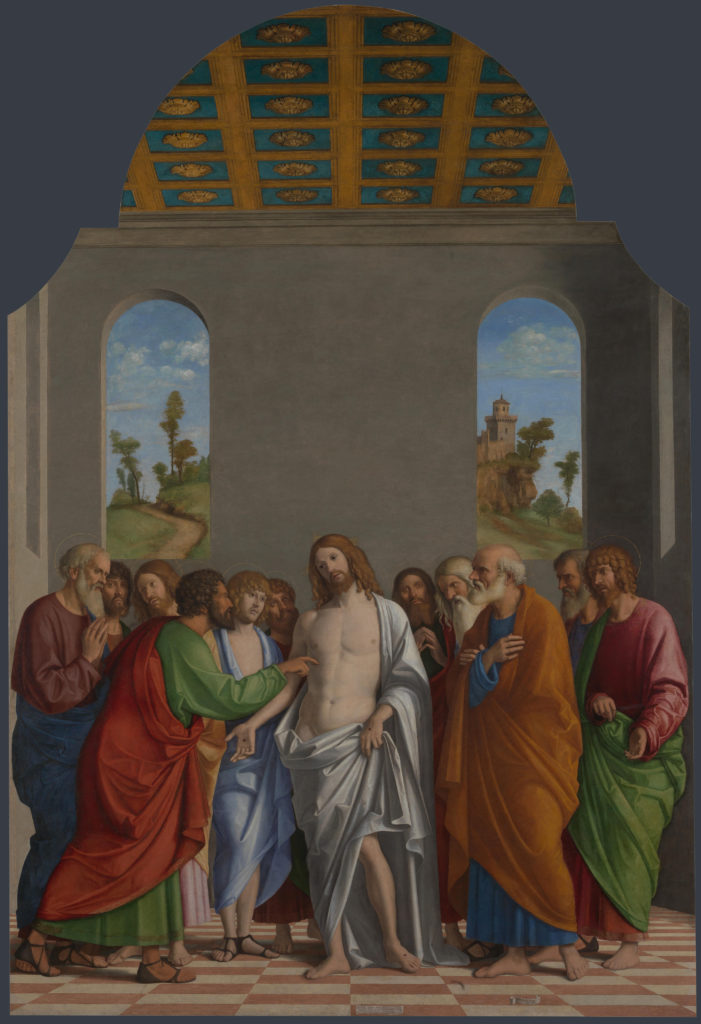
It is worth comparing the London painting with the one in the Accademia. The narrative elements from John’s Gospel are included in the earlier picture. Christ stands among the apostles in a closed room and St Thomas touches his wound and so comes to faith. By contrast, in the Accademia picture there are no other disciples. There is no closed room. The arch under which they stand looks out over a broad landscape. And, of course, the Accademia’s painting includes St Magnus, who lived centuries later ,and is not part of the gospel story. This is because it is sacra conversazione between the two saints who were appropriate to the devotion of the clients. Builder saints will help builder clients!
The painting itself is exquisite in every detail. When viewed in the gallery, the blue sky is set off by the dark curls on the back of St Thomas’ head.
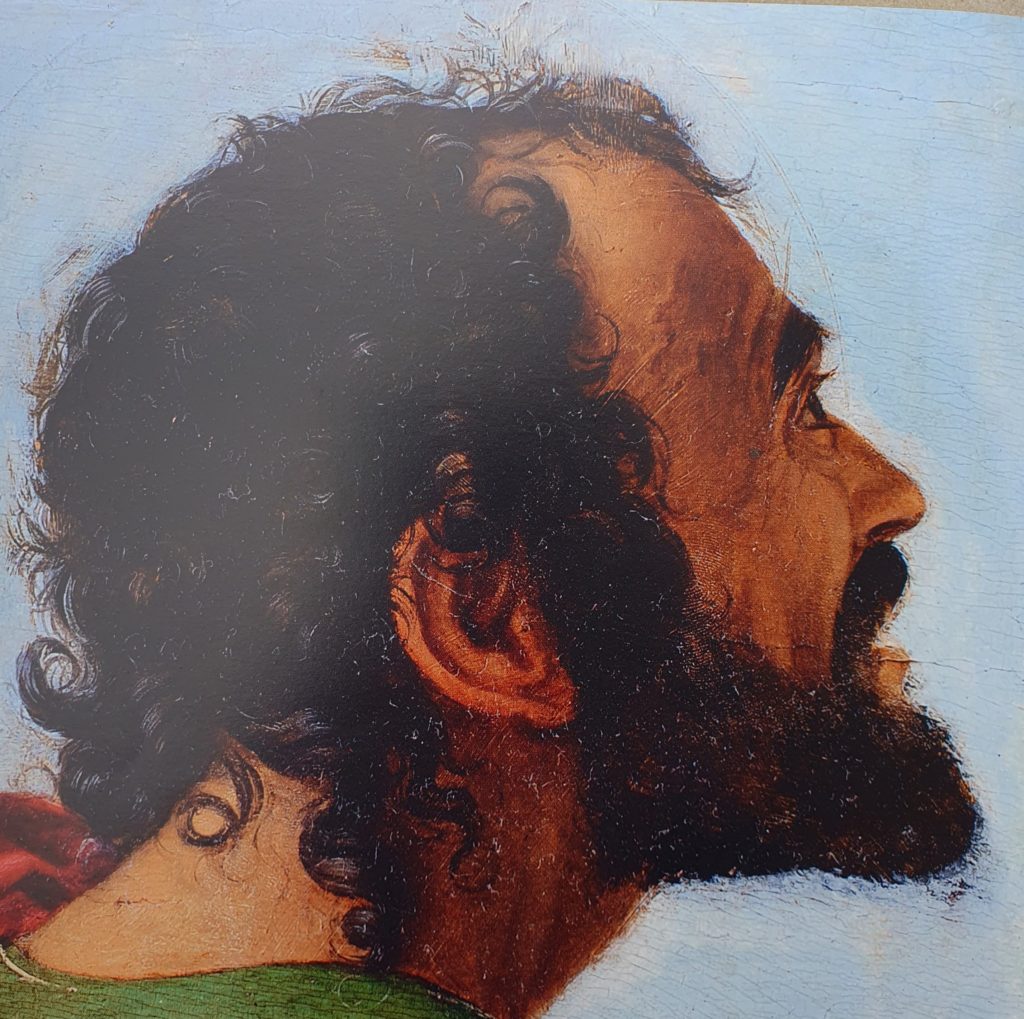
Christ grips the grips the hand of Thomas and guides it towards his wound.
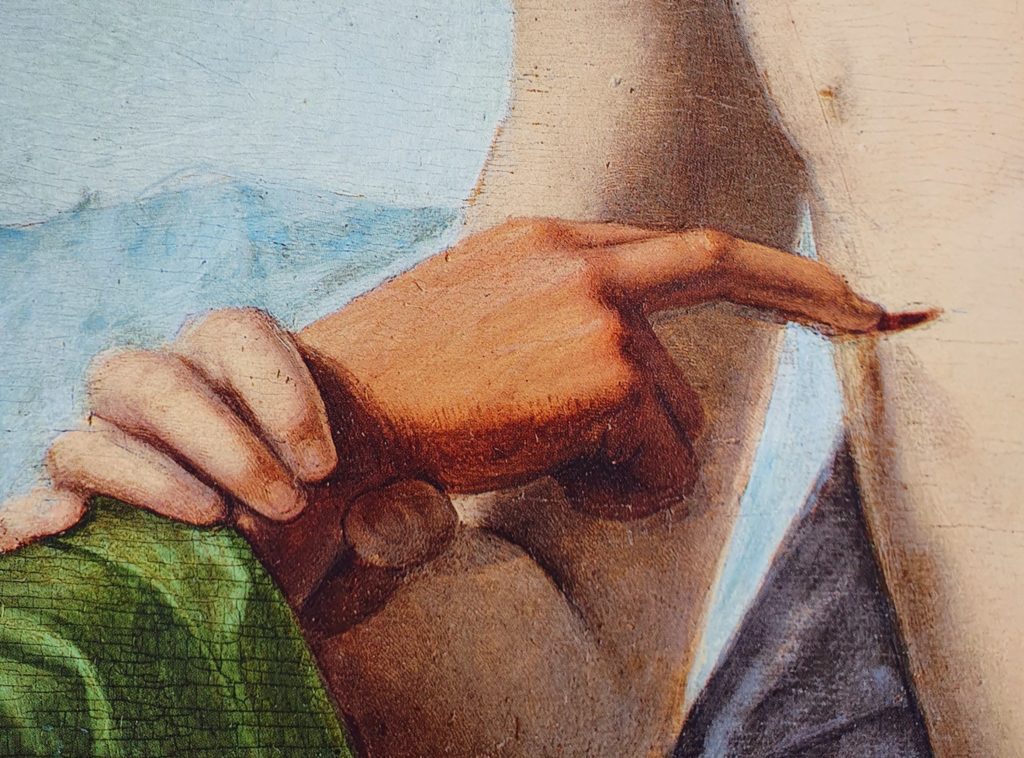
The Bishop’s ornate vestments include detailed images of other saints. The image shown below is of St Barbara with her tower; particularly appropriate for a guild of builders.
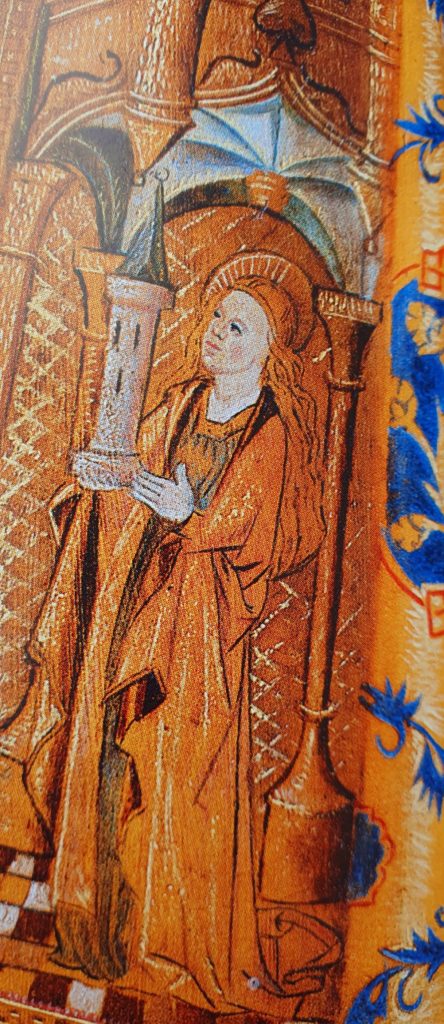
The clouds above St Magnus are surely a reference to his legend and the building of Santa Maria in Formosa.

Here Christ stands against an open landscape, which evokes not only the goodness and beauty of creation, but also the goodness of the one one through whom all things were made.
But within that landscape there is a lone rider who seems to be moving away. He wears a turban, suggesting that he may be Turkish. In the years just before this painting was made, the Venetians had suffered great losses against the Turks, and this figure may evoke the Turkish lack of conversion.
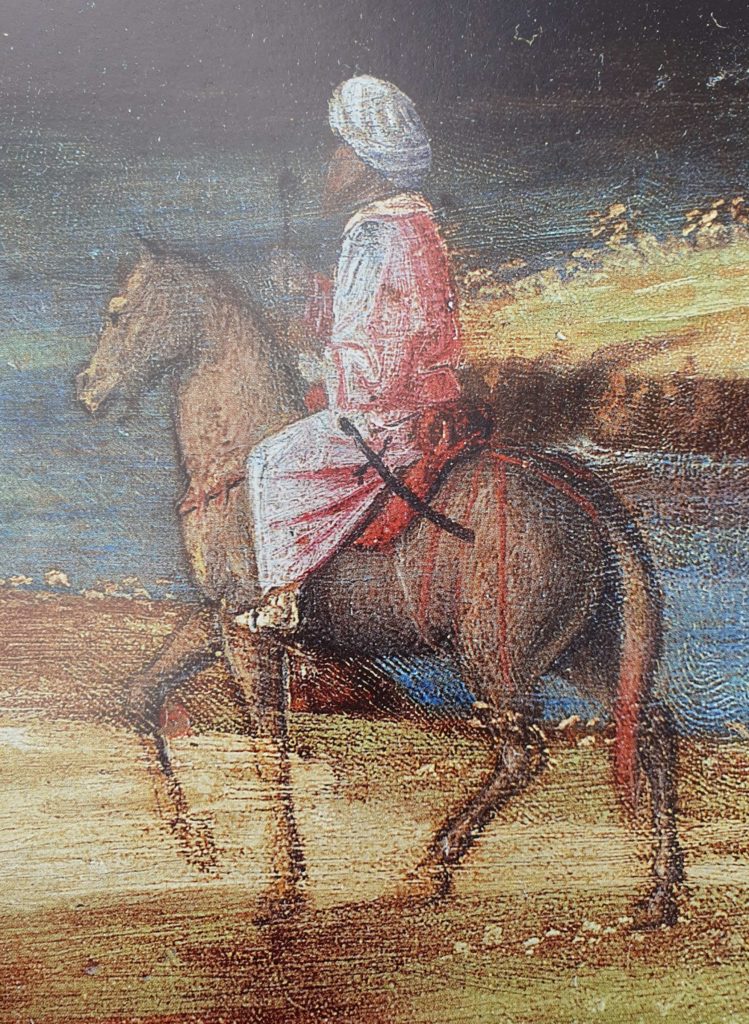
Although the painting was meant to foster devotion to the two saints, it is also about the grace of conversion associated with St Thomas. When we think of the gospel story of St Thomas and the Risen Christ, we sometimes see it as giving us licence to doubt. We think that it is okay for us to have doubts, if even the Apostle Thomas doubted. However, this was not how the story was understood by earlier generations of Christians. They saw Thomas’ doubt as a good thing because it was his way of conversion. Nor indeed, did they always see St Thomas as the odd one out among the apostles. Quite to the contrary, in some works of art he is shown as representative of the the apostles who also shared his doubt. So the scene was understood to be about God’s generous bestowal of the grace of conversion and his gracious strengthening of those already converted. St Thomas pray for us!
The Catholic Chaplaincy serves the students and staff of the University of Edinburgh, Edinburgh Napier University and Queen Margaret University.
The Catholic Chaplaincy is also a parish of the Archdiocese of St Andrews and Edinburgh (the Parish of St Albert the Great) and all Catholic students and staff are automatically members of this parish.